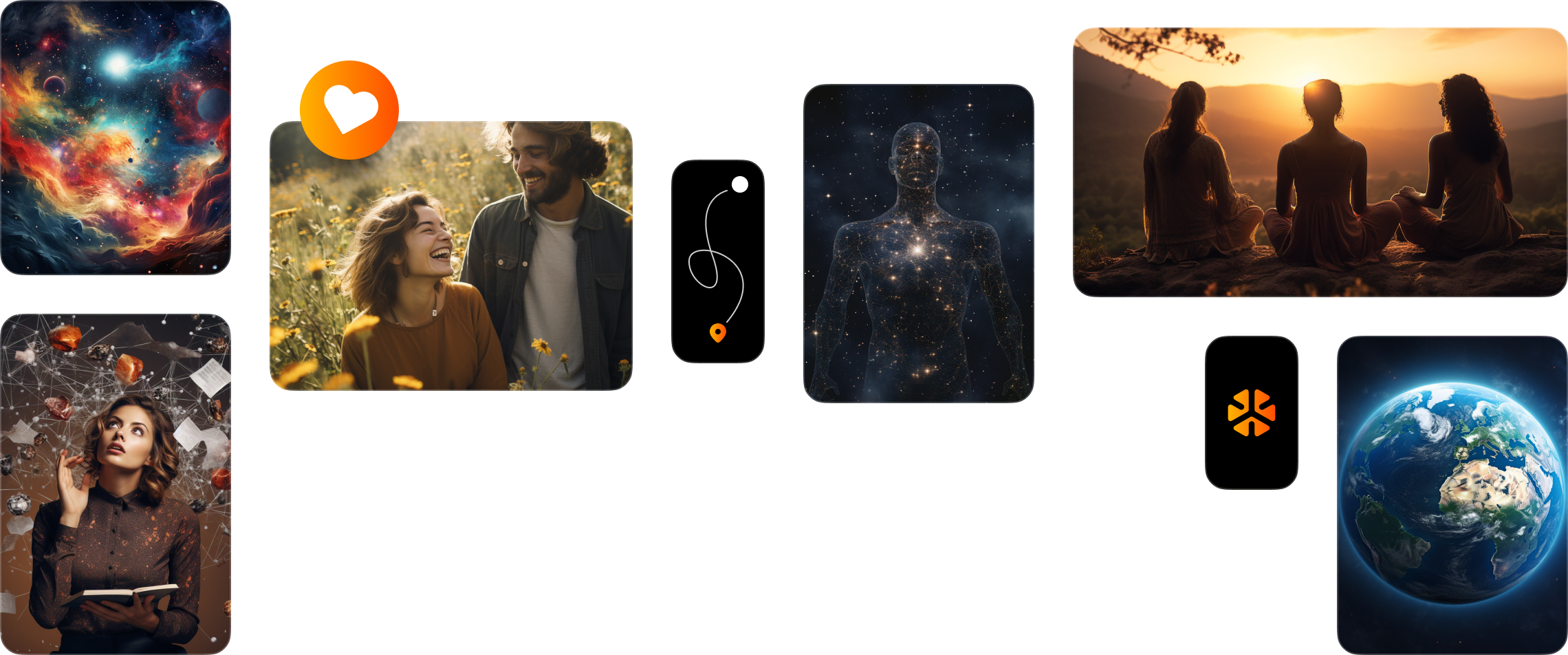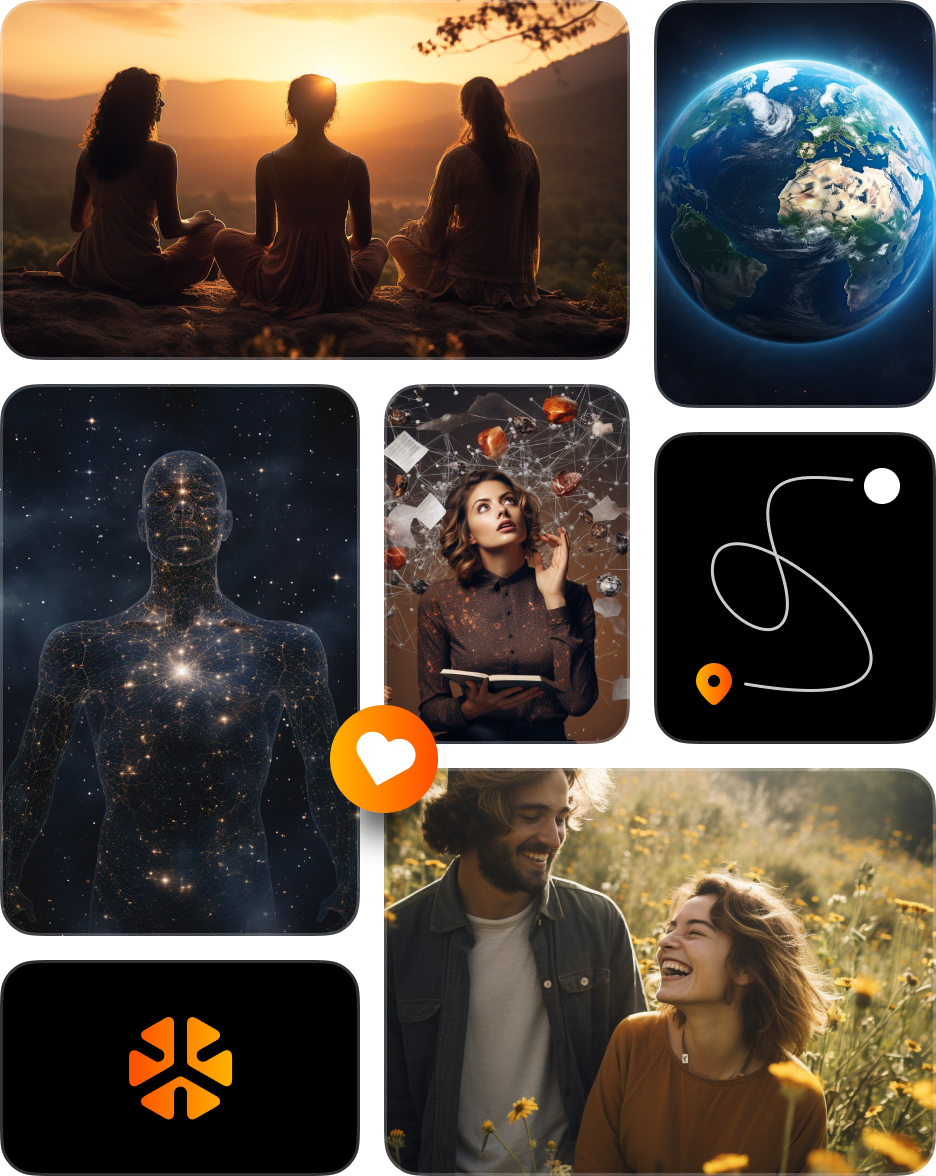Introduction: The Connection between Human Design and Relationships
Human Design is a system that combines astrology, the I Ching, the Kabbalah, and the Hindu-Brahmin chakra system to offer insights into human behavior and decision-making. It provides a framework for understanding the dynamics between individuals in various relationships, whether in parent-child relationships, romantic partnerships, friendships, or workplace interactions.
Overview of Human Design in Relationships
The Human Design chart or BodyGraph is a visual representation of how you are energetically designed to interact with the world. By examining your chart and the charts of those around you, you can gain insights into your relationships and how to enhance them.
Understanding Human Design Types
The five main Human Design Types are:
Manifestors: Initiators of action and change.
Generators: Builders with sustainable energy.
Manifesting Generators: A combination of Manifestors and Generators.
Projectors: Guides who understand others deeply.
Reflectors: Evaluators who mirror the health of their environments.
Knowing each person’s Type provides insights into how they interact with others and what they need in relationships.
Relationships as Mirrors
Human Design teaches that relationships are mirrors reflecting back aspects of ourselves. By understanding the dynamics at play in a relationship, we can learn more about ourselves, our patterns, and how to grow and evolve.
Parent-Child Relationships and Human Design
Understanding the Child’s Design
Human Design provides a framework for parents to understand their children’s unique designs. By examining a child’s chart, parents can gain insights into their child’s needs, communication style, and ways of learning, allowing for more tailored support.
The Parent’s Role
The parent’s design also plays a significant role in the relationship. Understanding one’s own design enables parents to recognize their tendencies and how they may impact the parent-child dynamic.
Bridging Communication Gaps
Human Design can help bridge communication gaps by highlighting differences in design that may lead to misunderstandings. By recognizing these differences, parents and children can find common ground and foster a more harmonious connection.
Supporting Growth and Development
By understanding a child’s design, parents can support their growth and development in ways that align with their natural tendencies and strengths. This alignment fosters a more nurturing environment and encourages the child to thrive.
Romantic Partnerships and Human Design
Understanding Compatibility
In romantic relationships, Human Design offers insights into compatibility by examining the dynamics between two charts. This analysis can highlight areas of harmony and potential challenges, providing a roadmap for navigating the relationship.
Communication and Conflict Resolution
Human Design’s insights into communication styles and needs can be invaluable in resolving conflicts and enhancing communication within a romantic partnership. By understanding how each partner communicates, couples can find more effective ways to express themselves and listen to each other.
Supporting Individual Growth
Within a romantic relationship, individual growth is vital. Human Design can guide partners in supporting each other’s personal evolution by recognizing each other’s unique paths and needs.
The Role of Centers and Channels
Centers and Channels within the Human Design system represent specific energies and functions. Examining these aspects in both partners’ charts can reveal deeper insights into the relationship’s dynamics, pointing to areas of synergy and potential growth.
Friendships and Human Design
Building Supportive Friendships
In friendships, Human Design can help individuals recognize compatibility and build supportive connections. By understanding the designs of friends, one can find ways to relate more authentically and provide mutual support.
Navigating Differences
Not all friendships are smooth sailing, and Human Design can offer guidance in navigating differences. Recognizing the unique design of each friend allows for empathy and understanding, even when differences arise.
Enhancing Communication
Just as in other relationships, communication is key in friendships. Human Design’s insights into communication can help friends understand each other better and enhance their connections through open and honest dialogue.
Aligning Goals and Values
By examining the Human Design charts of friends, individuals can recognize shared goals and values that strengthen the friendship. Understanding these alignments can foster a more harmonious and fulfilling connection.
Workplace Dynamics and Human Design
Understanding Workplace Roles
Human Design’s insights can be applied to the workplace to understand individual roles and how employees can best work together. Recognizing each employee’s design can lead to a more effective distribution of tasks and a more harmonious work environment.
Enhancing Team Communication
By applying Human Design principles, managers and team members can enhance communication within a team. Understanding how each team member communicates and processes information can lead to more efficient meetings and project collaboration.
Navigating Conflicts
Workplace conflicts can be analyzed and resolved through the lens of Human Design. Recognizing the unique designs of the individuals involved can provide insights into the root of the conflict and offer solutions for resolution.
Supporting Employee Growth
Human Design can be a tool for managers to support the growth and development of their employees. By recognizing each employee’s strengths and areas for development, managers can provide tailored support and opportunities for growth.
Using Human Design in Therapeutic Relationships
Enhancing Therapist-Client Understanding
Therapists can use Human Design to deepen their understanding of clients and their needs. By examining a client’s chart, therapists can gain insights into their communication styles, challenges, and paths for growth, leading to more personalized support.
Supporting Client Self-Exploration
Human Design can be a tool for clients in therapy to explore themselves more deeply. Understanding their design can lead to self-awareness and empowerment, supporting their therapeutic journey.
Tailoring Therapeutic Approaches
By recognizing a client’s unique design, therapists can tailor their therapeutic approaches to align with the client’s needs and strengths. This personalized approach can enhance the effectiveness of therapy and support the client’s healing process.
Building Therapist-Client Trust
Understanding the dynamics between therapist and client through Human Design can build trust and enhance the therapeutic relationship. Recognizing how both parties communicate and interact can foster a more open and supportive connection.
Personal Growth and Self-Understanding Through Human Design
Understanding Your Own Design
Human Design provides a framework for personal growth by helping individuals understand their unique designs. Recognizing one’s Type, Centers, and Channels can lead to insights into personal strengths, challenges, and paths for growth.
Enhancing Relationships with Self
By understanding one’s design, individuals can enhance their relationship with themselves. Recognizing personal needs and communication styles can lead to greater self-care and self-compassion.
Navigating Life Transitions
Life transitions can be navigated with the guidance of Human Design. Understanding how one’s design interacts with changes and challenges can provide a roadmap for navigating transitions with greater ease and clarity.
Supporting Spiritual Growth
Human Design can be a tool for spiritual growth, providing insights into one’s purpose and connection to the universe. Exploring one’s design can lead to deeper spiritual understanding and alignment.
Conclusion: The Transformative Power of Human Design in Relationships
Comprehensive Understanding
Human Design provides a comprehensive framework for understanding human behavior and relationships. From parent-child dynamics to workplace interactions, this system offers insights that can transform how we relate to others and ourselves.
A Tool for Connection
By recognizing the unique designs of individuals, Human Design serves as a tool for connection. Whether in romantic relationships, friendships, or therapeutic interactions, Human Design fosters empathy and understanding.
Supporting Growth and Development
Human Design not only enhances relationships but also supports personal growth and development. By understanding one’s unique design, individuals can find paths for growth, healing, and spiritual exploration.
Universal Application
The principles of Human Design can be applied universally across various aspects of life and relationships. Its insights into human nature provide a valuable tool for enhancing life’s many connections.
Final Thoughts
Human Design offers a transformative approach to understanding and improving relationships. Whether seeking to enhance communication, resolve conflicts, or foster personal growth, Human Design provides a pathway to more fulfilling and harmonious connections. It serves as a bridge to understanding not only others but ourselves, leading to a richer, more compassionate life.




















